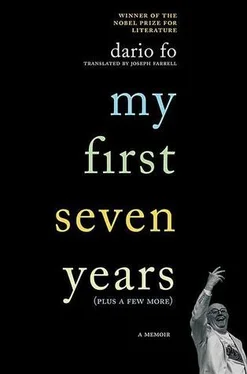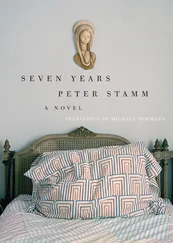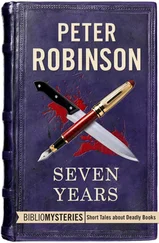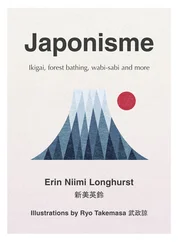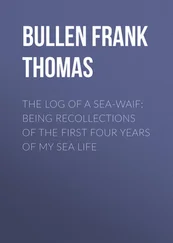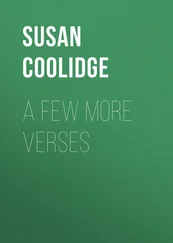Dario Fo - My First Seven Years (Plus a Few More)
Здесь есть возможность читать онлайн «Dario Fo - My First Seven Years (Plus a Few More)» весь текст электронной книги совершенно бесплатно (целиком полную версию без сокращений). В некоторых случаях можно слушать аудио, скачать через торрент в формате fb2 и присутствует краткое содержание. Год выпуска: 0101, Издательство: St. Martin's Press, Жанр: Биографии и Мемуары, на английском языке. Описание произведения, (предисловие) а так же отзывы посетителей доступны на портале библиотеки ЛибКат.
- Название:My First Seven Years (Plus a Few More)
- Автор:
- Издательство:St. Martin's Press
- Жанр:
- Год:0101
- ISBN:нет данных
- Рейтинг книги:3 / 5. Голосов: 1
-
Избранное:Добавить в избранное
- Отзывы:
-
Ваша оценка:
- 60
- 1
- 2
- 3
- 4
- 5
My First Seven Years (Plus a Few More): краткое содержание, описание и аннотация
Предлагаем к чтению аннотацию, описание, краткое содержание или предисловие (зависит от того, что написал сам автор книги «My First Seven Years (Plus a Few More)»). Если вы не нашли необходимую информацию о книге — напишите в комментариях, мы постараемся отыскать её.
My First Seven Years In a series of colorful vignettes, Fo draws us into a remarkable early life filled with characters and anecdotes that would become the inspiration for his own creative genius.
My First Seven Years (Plus a Few More) — читать онлайн бесплатно полную книгу (весь текст) целиком
Ниже представлен текст книги, разбитый по страницам. Система сохранения места последней прочитанной страницы, позволяет с удобством читать онлайн бесплатно книгу «My First Seven Years (Plus a Few More)», без необходимости каждый раз заново искать на чём Вы остановились. Поставьте закладку, и сможете в любой момент перейти на страницу, на которой закончили чтение.
Интервал:
Закладка:
‘He’s coming, he’s coming.’
The orchestra struck up a triumphal march, the trumpets blared out a thunderous entrance tune worthy of a circus, and fireworks went off.
‘Right, Picasso’s finally arrived!’
And there he was. Through the smoke and bangs, the profile of Otello, still in his white trench coat, could be made out.
Applause.
‘It really is him!’
Otello was about to speak: ‘Mes amis, je suis ravi d’être ici…’
One of the firemen-clowns was holding on to a large water pipe, which split apart. Disaster! A jet of water of apocalyptic proportions poured down on us. We were all soaked.
Picasso yelled out: Ah no, fuck it!’
Rush for the exits … some oaths, but much laughter. A splendid, very wet lady, who seemed to be emerging from the waves after a shipwreck, appeared contented enough but was heard to make the comment: ‘I’ll remember this occasion as long as I live. But was that really Picasso?’
CHAPTER 27. In Paris
Each one of us in the Brera dreamed of making his own journey to Paris, the capital of modern art. Paris was for us what the Holy Land had been for Christians in the Middle Ages. It was the Mecca of every apprentice artist, painter, writer or poet. I, too, dreamed of making that journey, and it was ironic how it happened. It all began with a commission which was, to put it mildly, unusual, not least in the workplace itself: the Monumental Cemetery in Milan. The job was to do a fresco on the inner and outer walls of a grave … yes, a grave, a tomb of imposing aspect. An architect friend had designed and built a chapel with octagonal base, copper dome and red porphyry columns, a kind of mausoleum for the members of a wealthy family from the Brianza … Brustello or Brustelli, I can’t quite remember. The patrons were very pleased with their final residence, but they found the inside too bare: it was all white, a bit too sepulchral. ‘I’m for something a bit more cheerful!’ the most likely first guest of the mausoleum, the octogenarian pater familias, had insisted.
And so we, the band of the ‘Painting of Cheerful Death with mosaic tesserae’, were brought in. In a few weeks, we prepared the sketches for the fresco which was to take in all seven walls (the eighth was the entrance). The tombs themselves were to be under the floor. We took our inspiration from the mosaics of the Mausoleum of Galla Placidia in Ravenna, with its tracery of stylised vine shoots and labyrinths of geometrical shapes twined round each other. The dome was to be painted in light blue with a scattering of cirri and wispy clouds.
I have to be truthful: it got you down to be living for almost a month among graves. Above all, just as you were beginning to get engrossed in the work, you would hear outside chants and litanies from priests, clerics and nuns processing with that day’s newly deceased. Since we were behind with the commission, we had to work late into the evening. When the custodian came along to get us out, it was already night. Walking back through votive lamps by the hundred, rows of praying angels, distraught female figures, male and female saints with outstretched arms induced us, as Italian superstition requires, to cheerfully touch the bobbly, decorative parts of the male reproductive system. Within three weeks, the job was done. Our clients were highly satisfied. ‘Look, what a lovely little space it’s turned out to be,’ said the family’s grande dame, ‘I might get another one built exactly the same instead of the bower in the park, then I could sit there gossipping with my friends as we sip our tea.’
Now I had a fair sum of money, enough for my travel.
Emilio Tadini, who at that stage had not yet started painting but who was writing subtle, intense poetry, decided to come with me.
Travel by train, obviously. When we reached our destination, we scarcely took the time to drop off our bags at the hotel before we were out on the streets in search of the museums. By the end of the week, we were like two punch-drunk boxers: out of one gallery, into another!
* * *
In the evening, to draw breath, we went to the theatre, avant-garde comic theatre, such as La Pomme Rouge or L’ane en Chaines, a cabaret of dangerously osé satire. I remember one scene in which six splendid girls appeared and with great elegance began to strip until they were completely naked, or nearly so. They were about to remove their G-strings when — whoops! — six dicks complete with decorative little balls! As the spectators guffawed in somewhat dismayed, indeed disappointed, laughter, the striptease girls peered in astonishment at those little appendages which had so unexpectedly protruded, and squealed in falsetto tones as they fled from the stage.
I swear that neither Emilio nor I ever understood if those penises were fake, and if we were confronted with enchanting transvestites or even with a sextet of carefully selected hermaphrodites!
In the following number, another nude girl appeared, totally intent on removing body hair with wax and tweezers … each time she plucked hair off, she uttered groans and incomprehensible oaths. Then she started squeezing imperceptible blackheads, while at the same time confiding in us, as though we were in her room backstage, about intimate problems to do with her profession as a striptease artist. She complained of a wicked headache and was really annoyed at having to make a living by exciting dirty-minded spectators, especially those who could not even take the trouble to conceal their nasty hand manoeuvres during her number. As she spoke, she was rubbing cream over her belly and buttocks, checking the result in a mirror. She continued to give vent to her irritation over her emotional life: she had a fairly well-to-do lover, but he bored her. Another rub of the cream, this time on her breasts, with a special touch of bright red for her nipples. Then she confided in us about the great love of her life: a right bastard, currently in jail, who exploited her, beat her, then kissed her gently, so that they ended up making love. As she described to us, with the aid of mime, their love-making, she filed the hard skin on her heels.
Finally she drew back a curtain, behind which a toilet seat appeared. She sat down on it and did a pee … she sighed and sobbed. She pulled the chain, and switched off the light. End of sketch.
* * *
I am not going to tell you about all the other shows: that was only a sample.
I felt my brain battered this way and that, like a table-tennis ball: from Braque to Feydeau, from the Jeu de Paume with Manet to the Salle Gémier with the most recent play by Camus.
We two poor little provincials certainly did not succeed in taking in all those emotions at one go. In my own case, I could never have imagined that those places would become familiar to me some decades later. None more so that the mythical Salle Gémier, one of the most prestigious theatres in France.
It was there in 1973 that I made my début with Mistero buffo, my first live performance in Europe.
CHAPTER 28. My Father’S Funeral
My father died at the grand old age of ninety in the early months of 1987. He went quietly and serenely, almost unexpectedly, but he had made all the funeral arrangements in advance, starting with the band which he wanted to accompany his body to the cemetery in Luino. The conductor of the town’s brass band was a long-standing friend of his. One evening some months previously, my father had paid him a visit to agree on the pieces to be performed. He even set about searching out and handing over the scores of the various marches he wanted played. His choice was a medley, rewritten in march time, of all the partisan songs from the valleys, including Ossola and the surrounding area, where the most bloody encounters with the Germans and the Fascist brigades had taken place. The first number on the programme was to be Val Sesia, a slow, dignified number, as powerful as the river which gave it its name. The next work was to be the march of the partisans from Val Comeggia, which was more like a dance-hall waltz than a patriotic anthem: then came the famous Se non ci ammazza i crucchi, se non ci ammazza i bricchi (If the Krauts Don’t Kill Us, If the Peaks Don’t Kill Us) from Val Vigezzo, and so on, right down to the inevitable Bella Ciao, and a closing rendering of Addio Lugano bella.
Читать дальшеИнтервал:
Закладка:
Похожие книги на «My First Seven Years (Plus a Few More)»
Представляем Вашему вниманию похожие книги на «My First Seven Years (Plus a Few More)» списком для выбора. Мы отобрали схожую по названию и смыслу литературу в надежде предоставить читателям больше вариантов отыскать новые, интересные, ещё непрочитанные произведения.
Обсуждение, отзывы о книге «My First Seven Years (Plus a Few More)» и просто собственные мнения читателей. Оставьте ваши комментарии, напишите, что Вы думаете о произведении, его смысле или главных героях. Укажите что конкретно понравилось, а что нет, и почему Вы так считаете.
